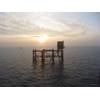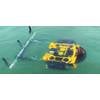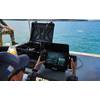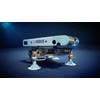SeeByte and MIT (CSAIL) are working together to improve the transfer of autonomy research and development between different autonomy systems. Currently users of one autonomy system, including the architecture and messaging middleware, are limited in their ability to utilize an alternative system. SeeByte and MIT will enable greater flexibility for customers and collaborators to select the most appropriate autonomy system.
MOOS-IvP is a set of open source C++ modules for providing autonomy on robotic platforms, in particular autonomous marine vehicles. The project is situated at MIT and is widely used in research programs worldwide.
SeeByte’s Neptune provides a payload control architecture, goal based mission planning, and real-time autonomy engine for Unmanned Maritime Systems (UMS) to plan and execute autonomy behaviors for both single-vehicle and multi-vehicle missions. Neptune has been used operationally by various Navy customers including in the U.S., Canada and the U.K.
In order to provide users of both systems with flexibility, SeeByte and MIT will develop technical approaches to allow improved cooperation and collaboration between these autonomy systems. This is in direct response to customer requests as autonomy research programs become larger and more complex, and as customers wish to transfer the output of their R&D activities into an operational environment. In particular a common theme has been the transition from MOOS-IvP to Neptune for use in higher TRL activities.
Mike Benjamin, Research Scientist at MIT CSAIL, said, “One of our primary goals, beyond educating new students in marine autonomy, is to enable the ideas developed in MOOS-IvP to have an impact in real fielded systems beyond research prototypes. The SeeByte Neptune system has an outstanding track record of fielding and supporting marine robotic systems and for coordinating with academic researchers to quickly bring innovative ideas to the field. Working together in this effort promises to open a new avenue for bridging new novel capabilities in MOOS-IvP to Neptune and its users.”
Bob Black, CEO SeeByte, said, “With high-tech innovative systems, collaboration with other like-minded partners is often key. MIT are providing world leading research in autonomy, and together I think both organizations will be able to harness the best capabilities of both to benefit our users.”
• 















 February 2024
February 2024



